Gold Diggers of 1935

Brief Synopsis
Cast & Crew
Busby Berkeley
Dick Powell
Adolphe Menjou
Gloria Stuart
Alice Brady
Hugh Herbert
Film Details
Technical Specs

Synopsis
The wealthy Mrs. Mathilda Prentiss, her sullen daughter Ann, and playboy son Humbolt are vacationing at a luxurious summer resort, where they are joined by Ann's fiancé, T. Mosley Thorpe, an eccentric, middle-aged millionaire who is writing a monograph on snuffboxes. Ann is getting no attention from Mosley and convinces her mother to hire Dick Curtis, the hotel's handsome and youthful desk clerk, to escort her for the summer. Dick hesitates, but his fiancée, Arlene Davis, encourages him to accept the job. With Dick's help, Ann buys a new wardrobe and jewels and gets a new coiffure, transforming herself into a lovely young woman. Meanwhile, Humbolt has discovered Arlene's charms, and Mrs. Prentiss has hired an impresario named Nicoleff to direct her annual charity show. The parsimonious Mrs. Prentiss wants to cut corners on the production, but Nicoleff, along with Schultz, his set decorator, Louis Lamson, the hotel manager, and Betty Hawes, the hotel stenographer, are plotting to make a big profit at the wealthy woman's expense. Betty, who has been taking dictation for Mosley, is also scheming to blackmail the befuddled writer, by suggesting he use her name in the lyrics for a love song. When she addresses a copy to herself, it reads like a proposal. By the time the show goes on, Ann and Dick are in love, Arlene has married Humbolt and Mrs. Prentiss discovers Mosley's entanglement with Betty, who is suing him for breach of promise. The lavish musical is a hit, but has cost Mrs. Prentiss a small fortune. Finally, Ann defies her mother and marries Dick.

Director

Busby Berkeley
Cast

Dick Powell
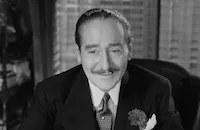
Adolphe Menjou

Gloria Stuart

Alice Brady

Hugh Herbert

Glenda Farrell
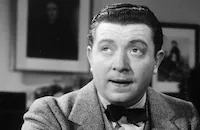
Frank Mchugh

Joseph Cawthorn
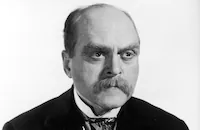
Grant Mitchell
Dorothy Dare
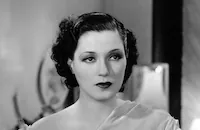
Winifred Shaw
Thomas Jackson
Ramon And Rosita
Phil Tead

Eddie Kane
Nora Cecil
Arthur Aylesworth
Harry Holman
Jan Buckingham
Olive Jones
Rosalie Roy
Mary Russell
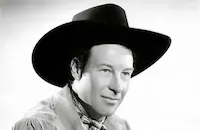
Gordon Elliott
Marjorie Nichols
Grace Hayle
Amo Ingraham
Don Brodie
Eddie Fetherston
Billy Newell
George Riley
Harry Seymour
Ray Cooke
John Quillan
Florence Fair
Crew
George Amy
George Barnes
Busby Berkeley
Al Dubin
Leo F. Forbstein
Anton Grot
Ray Heindorf
Robert Lord
Robert Lord
Peter Milne
Peter Milne
Orry-kelly
Manuel Seff
Harry Warren

Photo Collections
Videos
Movie Clip

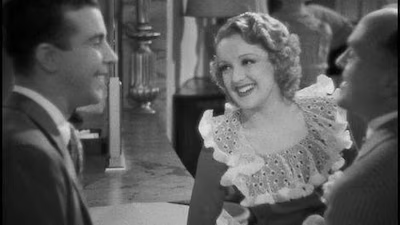


Trailer
Film Details
Technical Specs

Award Wins
Best Song
Award Nominations
Best Dance Direction
Articles
Gold Diggers of 1935
The swank setting for Gold Diggers of 1935 is the Wentworth Plaza, a summer hotel for big tippers. Just ask the staff. There's quite a pecking order to determine who gets what cut of the gratuity pie. But everyone is determined to get their fair share, including medical student/desk clerk Dick Powell. So, when Powell is offered big bucks to entertain sheltered heiress Gloria Stuart for the season, it sounds like easy money. But Stuart has a special pact with her mother: one summer of fun and then she'll marry her fianc¿a stuffy snuffbox expert. As luck, and Hollywood, would have it, Powell and Stuart fall in love and collaborate on a musical revue. Enter Adolphe Menjou as a Russian dance director, who helps orchestrate the couple's romance and the show's production.
And that's where the real story begins - with Berkeley. Gold Diggers of 1935 marked the choreographer's debut as a solo director. He had, of course, directed the dance numbers in many earlier films, including 42nd Street and Gold Diggers of 1933 (both 1933) and received co-directing credit for She Had to Say Yes (1933) with George J. Amy. But Gold Diggers of 1935 would be Berkeley's first film with almost total creative control. And the results are unforgettable. With only three songs, Lullaby of Broadway, I'm Going Shopping With You and The Words Are In My Heart, Berkeley extends the limited production numbers to dramatic effect.
Most visually stunning is the white piano number of The Words Are In My Heart, where fifty-six grand pianos come to life in a deco kaleidoscope. And for Berkeley, the creative impetus for the scene lived for years in his head before it danced on screen. As Berkeley recalled, "one day in New York I was watching an act at the Palace with four men playing grand pianos. I thought to myself then, 'someday I'll do that with fifty pianos,' and when it came time to think of something for this song, the thought came to mind." If you look very carefully, you'll realize how Berkeley pulled this trick off. Under each of the light, specially designed piano shells, was a dancer, wearing black pants and staying in step to black tape marks on the glossy floor. But it's doubtful many viewers noticed. Even after you're let in on the secret, the dance still mesmerizes.
The other pure Berkeley number in Gold Diggers of 1935 is probably among the best remembered sequences of his career – the show stopping finale Lullaby of Broadway. The sequence, which turned out to be a favorite of Berkeley's, was a difficult one to conceive. After composer Harry Warren wrote the tune, and lyricist Al Dubin added the words, telling the story of a Broadway Baby who plays all night and sleeps all day, Berkeley knew immediately how he wanted to stage the main part of the number but was at a loss to find a perfect opening. It took a little friendly competition from Al Jolson for Berkeley to find his inspiration. Jolson had heard Lullaby of Broadway and wanted it for his next movie. Finally, Berkeley agreed that if he didn't find a way to open the number in 24 hours, Jolson could have it. Obviously, inspiration struck; Berkeley opened with singer Wini Shaw's face on a black background.
The fantasy film within a film, which featured over a hundred dancers, provided an unusual, but dramatic, ending to Gold Diggers of 1935 and earned Busby Berkeley an Oscar nomination for Best Dance Direction. The number was also a winner for Warren and Dubin, who received an Academy Award for Best Song. The segment ranks right up there with Berkeley’s best. As the New York Times film critic said of Gold Diggers of 1935, the "master of scenic prestidigitation continues to dazzle the eye and storm the imagination."
And here's an interesting product placement trivia bit: Buick had a 10 picture deal with Warner Brothers; in exchange for being able to associate themselves with Warner Brothers' films, Buick provided the cars to be used as props in the films. Gold Diggers of 1935 is a prime example. Another company with a long- term agreement with Warner Brothers was General Electric - specifically they were trying to promote a new kind of refrigerator. As a result, you often see a kind of refrigerator used in Warner films that wasn't yet widely used by the public.
Producer: Robert Lord
Director: Busby Berkeley
Screenplay: Peter Milne, Manuel Seff, Robert Lord
Art Direction: Anton Grot
Cinematography: George Barnes
Editing: George J. Amy
Music: Al Dubin, Harry Warren
Cast: Dick Powell (Dick Curtis), Gloria Stuart (Amy Prentiss), Adolphe Menjou (Nicoleff), Glenda Farrell (Betty Hawes), Grant Mitchell (Louis Lamson), Frank McHugh (Humbolt Prentiss),Joseph Cawthorn (August Schultz).
BW-95m. Closed captioning.
by Stephanie Thames

Gold Diggers of 1935
Quotes
Trivia
Notes
A news item in Daily Variety notes that Jack Grieves, a twenty-six year old dancer in the chorus, died on the set from acute indigestion. A news item in Hollywood Reporter notes that Rosita, formerly of the dance team Ramon and Rosita, applied for an injunction against Warner Bros. because although she did not appear in the film, she was billed as dancing with Ramon. According to modern sources, fifty-six pianos were used in "The Words Are in My Heart" number. To create their movement, stagehands dressed in black were under each piano. "Lullaby of Broadway" won the Academy Award for Best Song of the year. For more information on Warner Bros.' "Gold Diggers" films see the entry below for Gold Diggers of 1933.

Miscellaneous Notes
Released in United States 1935
Released in United States 1935














